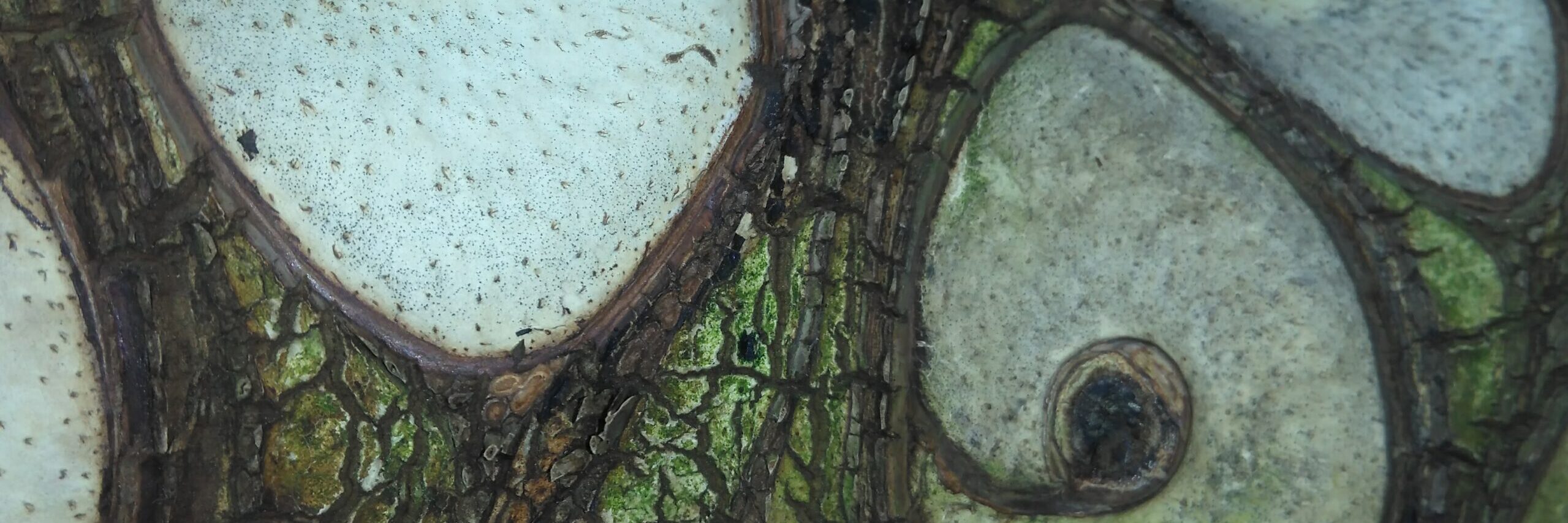
Unstead nature reserve is one of our local reserves which is not far from Guildford, which is a good place to visit. It is located just off the A3100 on the edge of Peasmarsh or accessed from the A281 Horsham Road, just after Shalford village. Parking is limited by the sewage works here. If you want to be able to enter the hides to watch the birds you will need to become a member which is reasonably priced. Otherwise you can view the site from the paths which are around the site. There are some gated paths which are padlocked and can only be accessed at certain times. To visit does not require much walking as the area is small.
Over the years it has fallen into disrepair since its ‘hay day’. People from over the South East of England used to visit because some interesting birds would show up here. It is only in the last 2 or 3 years from writing this blog, that work has begun to recover the area. More can be read about that on the website already linked at the beginning of this post.
One of the smaller projects the team of volunteers have worked on is the area below. They have planted an area of Miyawaki forest (See the notice). If you want to find out more about this style of forestry visit this site.
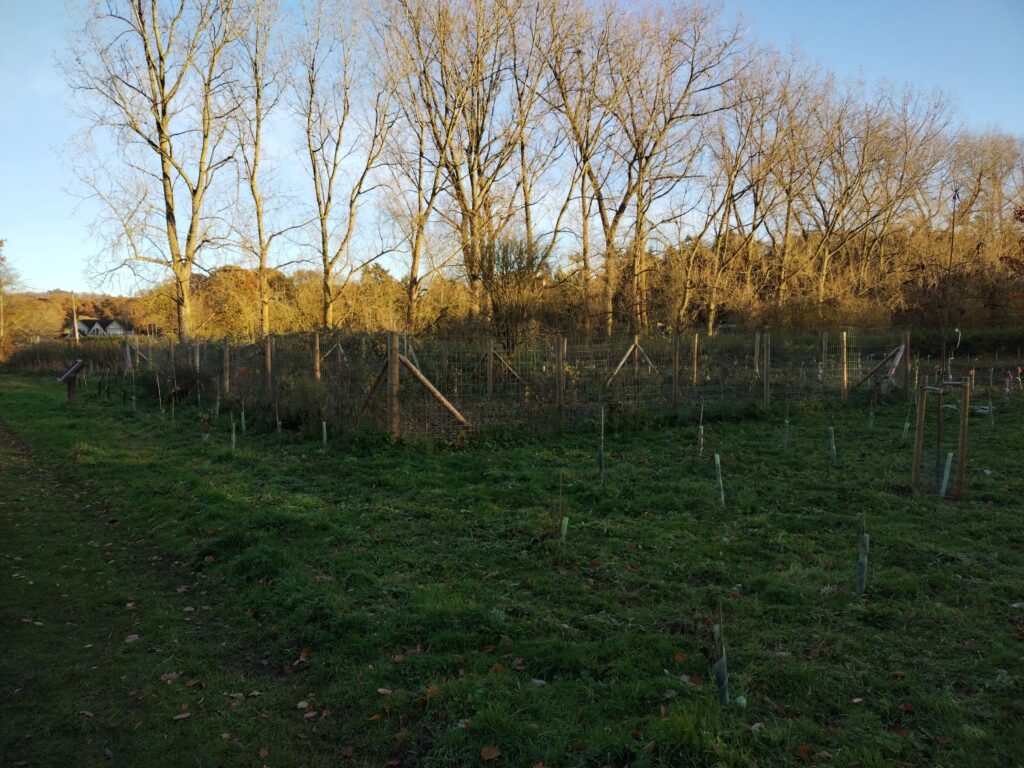

Whilst there the lighting was rather lovely with the sun setting and the moon rising which you can just about see in the zoomed in picture below off to the right. You can just about make out the new hide in the middle of the picture which looks out on some pools which are obscured in this picture by the vegetation. Beyond that hide are two smaller pools which can be seen from the path that runs along the side of the field below – off to the right.
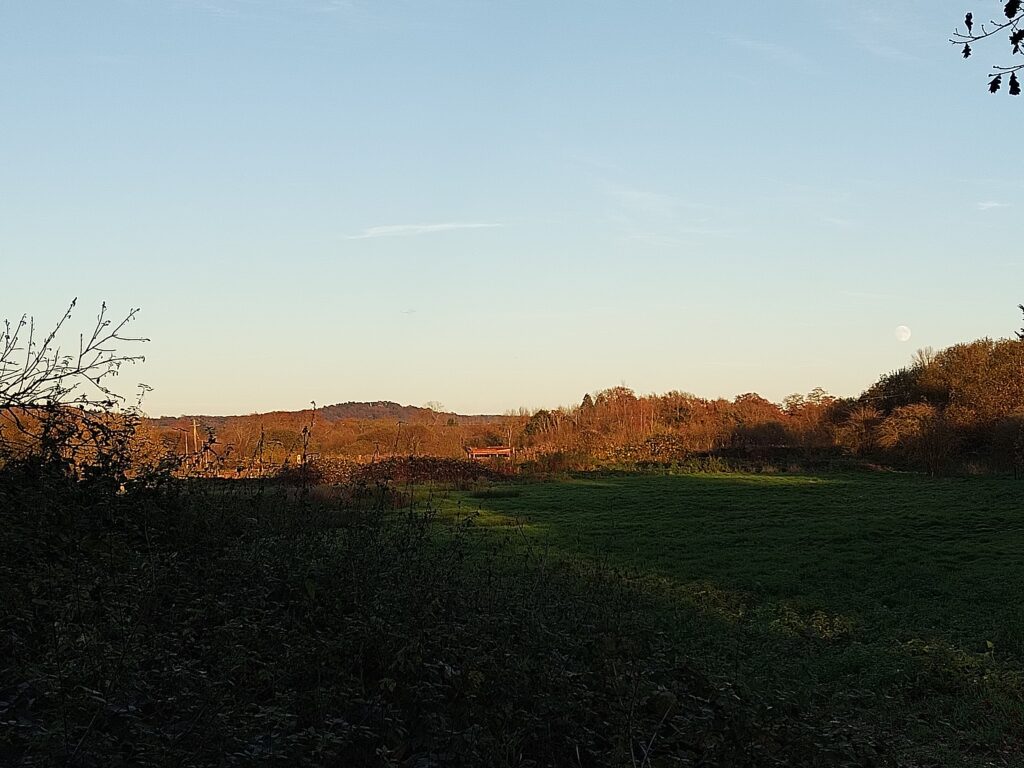
There are a number of larger nest boxes around the site as well as bat boxes which you can see a couple of in the next photos. In previous years barn owls have visited the site but I don’t know whether they have nested.
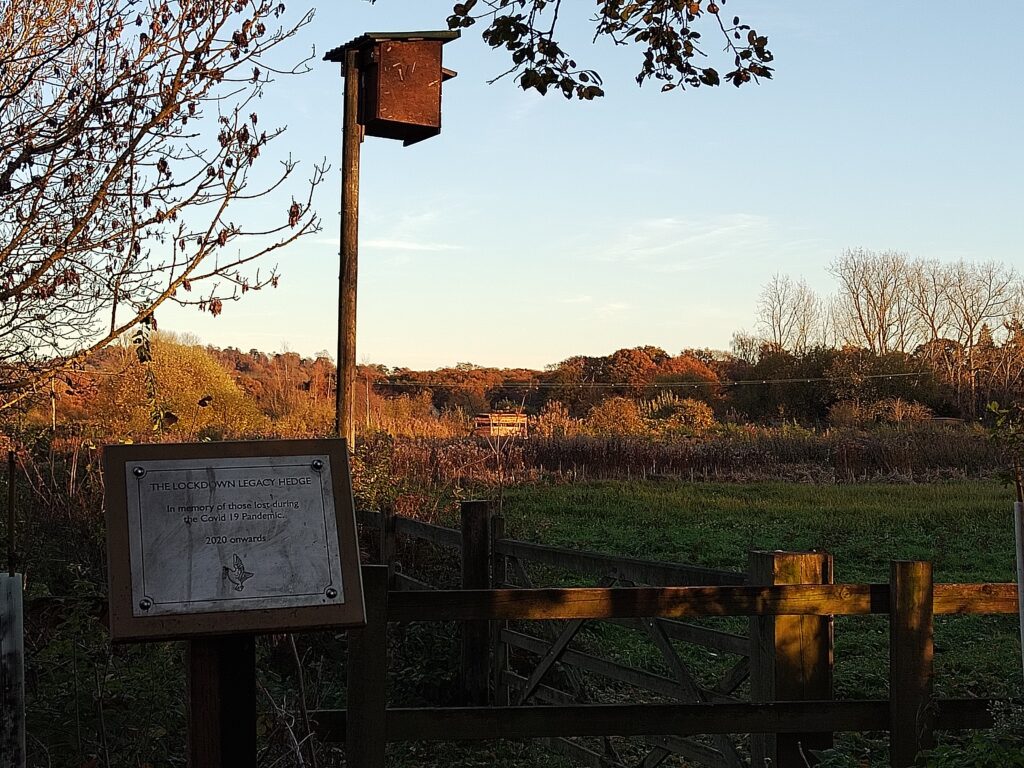
My photo doesn’t really show off how large this rather splendid tree is which I have not identified. You can get an idea of how large it is by the bat box which is near the first tree fork.


The gate below is one of the padlocked gates which can only be accessed at open days which are open to those who have membership.
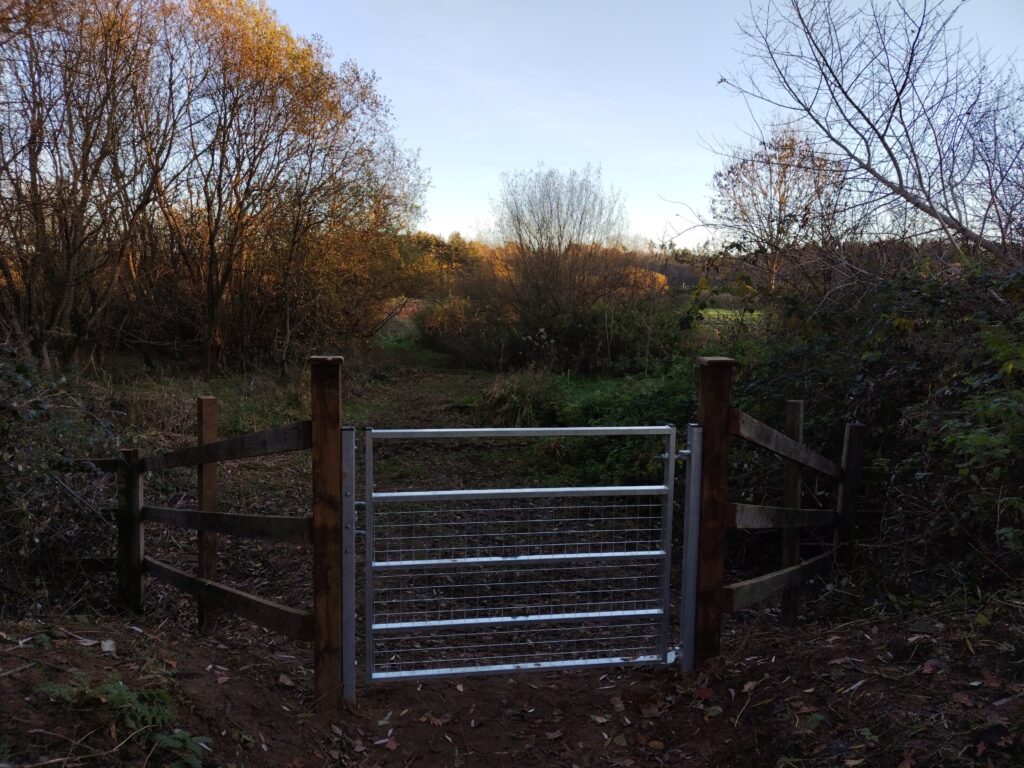
The original hide here has a bird feeding station which is just beyond and can be seen in the photo after the one below. This area needs to be approached slowly as the sides leading up to the hide are exposed. In the past brambling (Fringilla montifringilla) were regularly seen here in winter. You can view most of the pool beyond, over the fence if you’re tall enough. There are a number of ditches and channels that can be seen from here too. There are a number of these all over the site which are not all visible. Often in winter water rail (Rallus aquaticus) can be seen here. This area below can attract a number of small birds due to the feeding station. On the hide is a large white board with a plastic cover on it. Usually there is a marker pen which you can mark down what you’ve seen on the board. There are often birds reported on there by various members too and there will be a notice or two.
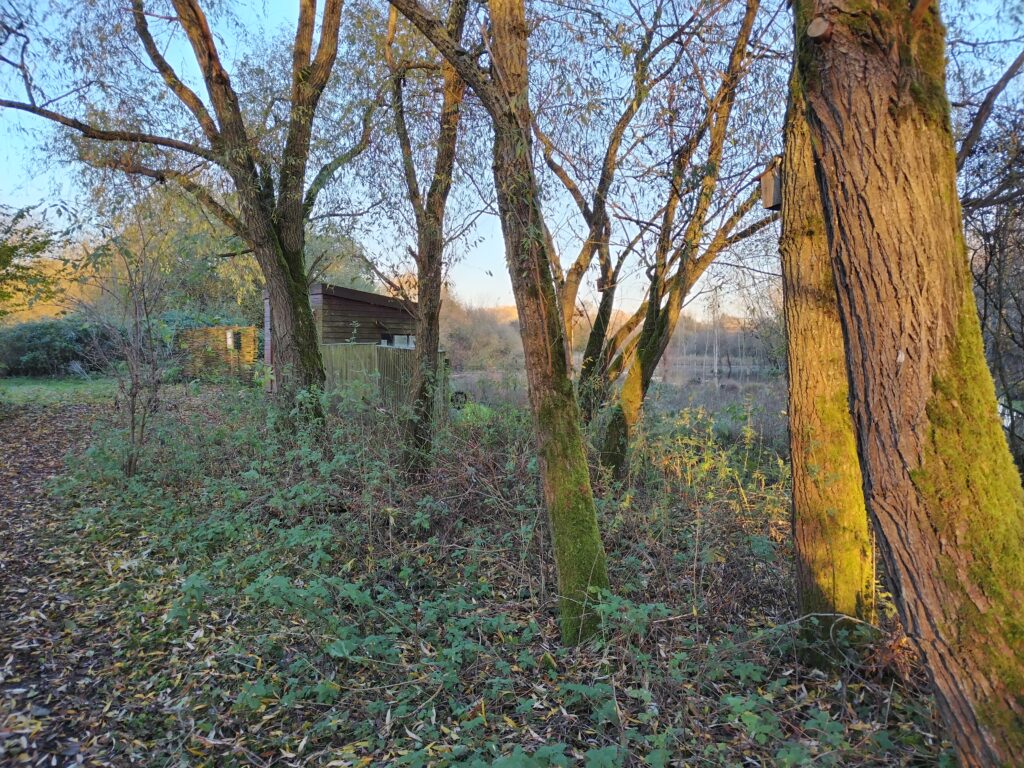
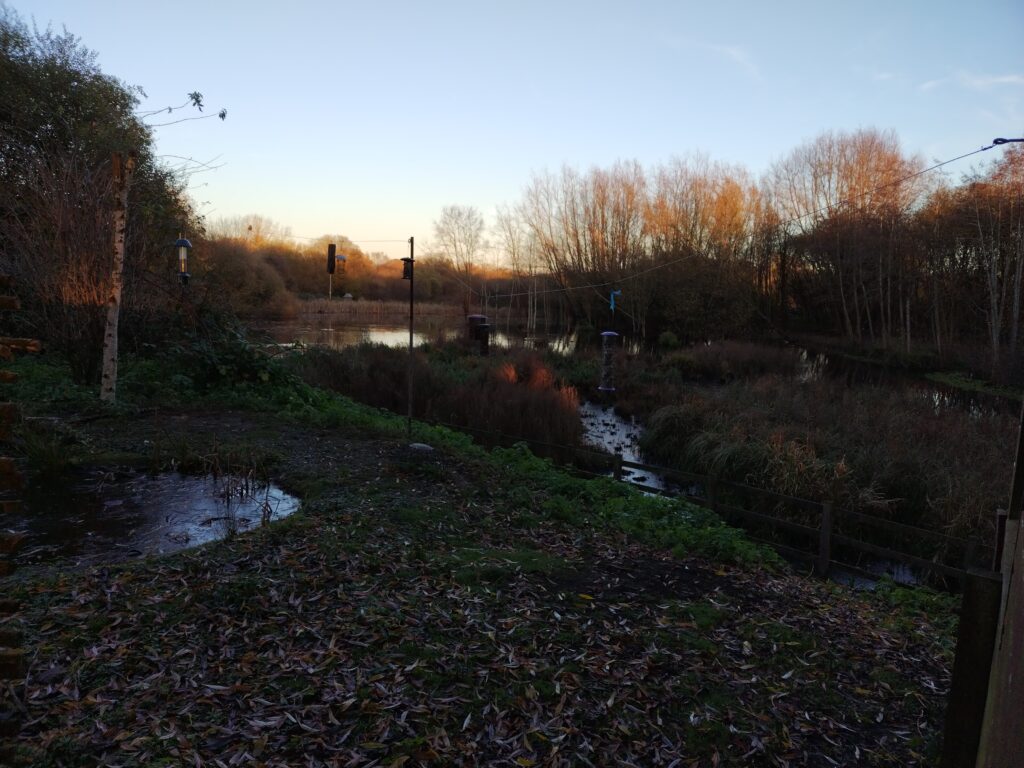
Here is a list of the birds which I saw today. I recorded them on to BirdTrack which is an app I have written of before. I have not included how many I saw of each species. There were a large number jackdaw (over 100) and coot (about 20). The data is collected by the British Trust for Ornithology (BTO):
- Black-headed gull (Croicocephalus ridibundus)
- Blackbird (Turdus merula)
- Blue tit (Cyanistes caeruleus)
- Carrion crow (Corvus corone)
- Chiffchaff (Phylloscopus collybita)
- Coot (Fulca atra)
- Cormorant (Phalacrocorax carbo)
- Dunnock (Prunella modularis)
- Gadwall (Mareca stepera)
- Goldcrest (Regulus regulus)
- Great Spotted Woodpecker (Dendrocopus major)
- Great tit (Parus major)
- Green sandpiper (Tringa ochropus)
- Jacdaw (Coloeus monedula)
- Jay (Garrulus glandarius)
- Little grebe (Tachybaptus ruficollis)
- Long-tailed tit (Aegithalos caudatus)
- Magpie (Pica pica)
- Mallard (Anas platyrhynchos)
- Moorhen (Gallinula chloropus)
- Mute swan (Cygnus olor)
- Pheasant (Phasianus colchicus)
- Pied/white wagtail (Motacilla alba)
- Red kite (Milvus milvus)
- Robin (Erithacus rubecula)
- Stock dove (Columba oenas)
- Teal (Anas crecca)
- Tufted duck (Aythya fuligula)
- Woodpigeon (Columba palumbus)
- Wren (Troglodytes troglodytes)
